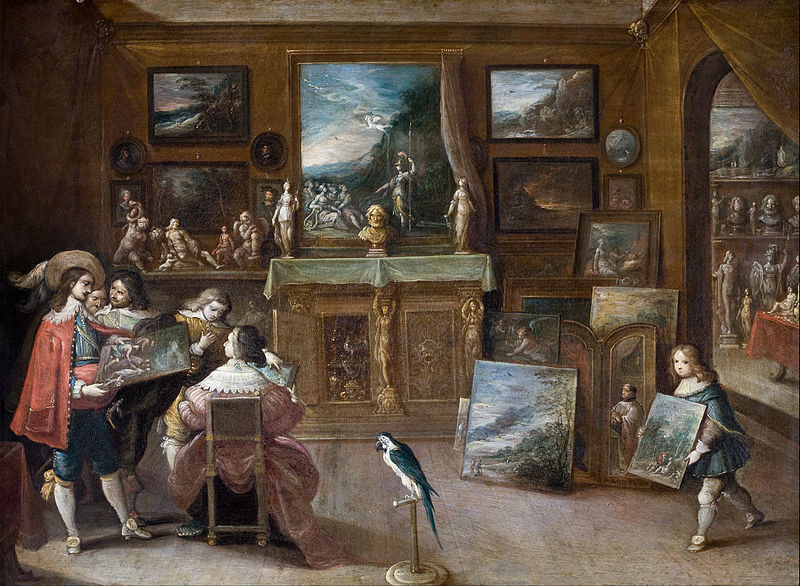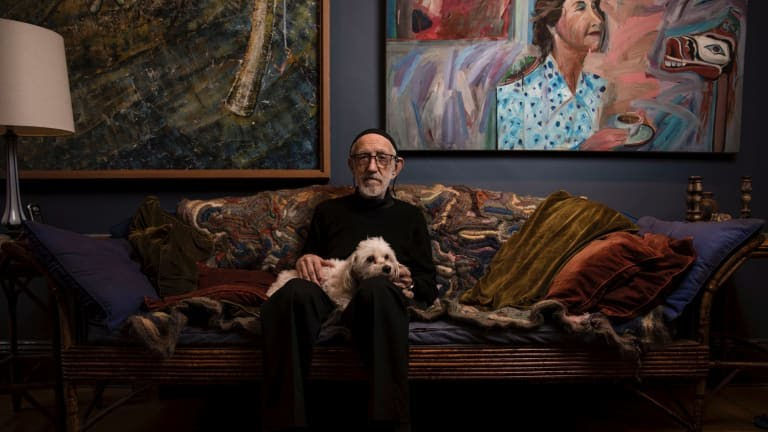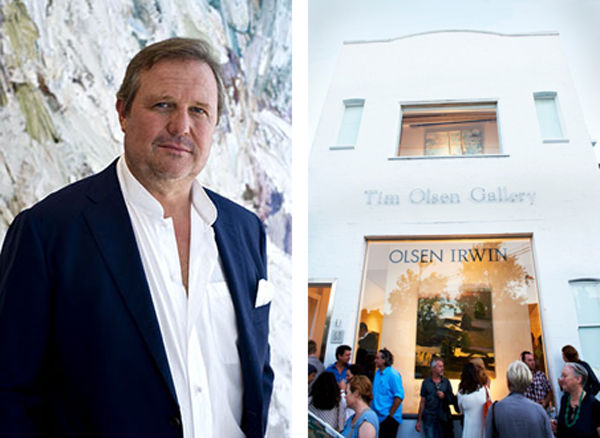Love is unconditional, relationships are not: Power and control in the artist gallery relationship
- Andrew McIlroy
- Dec 19, 2018
- 8 min read

“The market is so quiet. I’ve never seen it this bad.” Such gloomy refrain from an art dealer is always difficult for the hope-filled artist to hear and does not usually bode well. And while perhaps a truer word is never spoken, the mutterings, discontent and blame-game that follow can lead to the fracturing of a once-beautiful relationship.
While long standing Australian galleries and their directors such as Stuart Purves (Australian Galleries), Bill Nuttall (Niagara Gallery), Tim Olsen (Olsen Gallery), Annette Larkin (Annette Larkin Fine Art), Denis Savill and Frank Watters (both now retired), and the late Ray Hughes stand as a testament to ethical behaviour and the true value of a mutually-rewarding artist gallery relationship, many less high-minded gallery businesses are hitting the wall, leaving their embittered artists unprotected and scattered among the debris.
It is disappointing that artists and their gallery directors or dealers cannot access couples counselling. If they could, maybe they would realise sooner and before the hurt sets in that lying at the heart of any deteriorating relationship is the battle for power and control.
Counsellors will tell you that when two people get together, their realities often clash. One person may feel unhappy with the level of attention they get from their partner and may express this unhappiness as complaints about their partner or complaints about the relationship.
The other person, in turn, may feel that their partner is often “making a mountain out of a mole-hill” and creating problems where there are none.

Unconscionable conduct: Charles Blackman and Robert Dickerson watch as three paintings falsely ascribed to them by Melbourne art dealer Peter Gant go up in smoke Photo: The Age (2010)
Whenever such a clash of realities or perceptions occur, a battle for control often ensues. Most often it gets played out - usually in the public gaze - as a battle about who is right and who is wrong.
If I can prove that you are wrong, the logic goes, then you are the one with the issue, and the one who needs to change. This also means that I can continue to see the world my way and that I do not need to change anything about myself.
Of course there are many things we cannot control in our lives. And an artwork’s failure to sell may well be a reflection of the market and not simply in the eyes of the artist the fault of the gallery director.

Frans Francken the Younger, 'A visit to the Art Dealer' (early 1600s)
But the relationship may be healthier from the outset, expectations better understood and hurdles overcome if mutual obligations are clearly articulated.
And articulating these things is best reduced to writing, ideally in the form of a legal contract or to use a less intimidating term, agreement. Such contracts can do more than set out expectations, hopefully avoiding the pitfalls that lead to litigation or loss. Properly balanced, they are valuable and not to be feared.
Lawyers working in the arts are it seems highly critical of artists. Too often, they plead, artists abrogate their professional responsibility by leaving everything to the judgment, honesty and business expertise of the dealer/gallery.

Contract law is increasingly playing a role in protecting artists and galleries alike Photo: Victorian Bar Association
Yet the relationship shared between an artist and his or her gallery/dealer is too important to leave to such vagaries.
At best, the artist can expect that partner to show love and respect. At worst, they can be expected to act like any other small retailer, with heartless self-interest.
It is a relationship of mutuality. The artist on the one hand is relieved of most commercial distractions to devote more time to his or her practice. The dealer on the other can make a living and gain enormous satisfaction by promoting and protecting the artist.
Stripping away the artifice of gentility, without the dealer/gallery most artists would not survive. Without the artist, the dealer/gallery would not exist. This observation certainly is not new

Legendary Sydney art dealer Denis Savill, who retired in 2016 Photo: The Daily Telegraph
But it does focus attention on the primacy of the commercial relationship. The basis of the much-idealised relationship between artist and gallery is, quite simply, money. While other high-minded motivations may round out the relationship, without a financial dividend it is doomed.
No-one should be fooled. A gallery is a business. If it is not treated as such by its owner it will not remain a gallery for long.
Few artists discuss with their gallery the mechanics of their relationship. For most, it is sufficient that their work will be exhibited. Moreover, many artists consider they are in such a precarious bargaining position that they dare not appear difficult.
It must be said that this suits many galleries. It is to their advantage to keep their relationships with artists as unstructured as possible for this permits them optimum commercial flexibility. (Simpsons Solicitors, Sydney)
Unfortunately, in some instances, this latitude has revealed an inherent potential for ethical flexibility. The collapse of Australian Art Resources', 'Axia Modern Art', in Melbourne in 2011 comes vividly to mind, for the writer and no doubt many others reading this article. Here artists were left out-of-pocket and scrambling to recover missing artworks, and without the benefit of any paperwork to back their claims.

Axia Modern Art in Melbourne Photo: The Age (2011)
Artist and gallery must discuss, at the outset, the basis of their relationship. If they do not, and instead adopt an offhand trust, they will inevitably maintain a number of unrevealed misunderstandings and potential sources of acrimony.
The mechanics must be fully discussed, negotiated and, when agreement is reached, should be reduced to writing. The written agreement is standard business practice in almost all commercial relationships except it seems the visual arts.
In recent years, the other areas of the arts have realised that some contractual formality is advantageous; novelists, script writers, performing and recording musicians, actors of stage and screen, all now normally enjoy the protection of written agreements. It is becoming an established business practice. The basis of the artist-gallery relationship is contractual.
In most instances the contracts are oral, but they are nevertheless valid enforceable contracts. (Simpsons Solicitors, Sydney)
Most dealers refuse to enter written contracts. To demand such formality is somehow considered an affront to the integrity of the dealer. But such sensitivity is misplaced.

Sydney art dealer, Frank Watters retires after 54 years Photo: The Sydney Morning Herald (2018)
The owner of one Melbourne gallery echoed the words of many other dealers when he said, "The relationship is one of trust. Without trust, the contract isn't worth the paper it's written on.'' It is undoubtedly true that trust is fundamental to the artist gallery relationship. It is true of all intimate relationships.
But there is no reason to equate written agreements with the absence of trust.
All the contract does is spell out the mutual obligations and duties of the parties. Each knows what they must do and what they can expect the other to do. This clarity of expectation avoids those innocent misunderstandings that can be so destructive of the relationship and assists both artist and gallery in the maintenance of an amicable and mutually supportive bond. Rather than indicating an absence of trust, a fair and even-handed contract or agreement enhances the very development of trust.
And, if there is a breakdown in the relationship - something that is surely difficult to foresee at the outset - mere “trust'' is valueless. The parties will be at loggerheads, each maintaining that their memory of the agreement and that their understanding of the facts is the correct one. When this happens there are only a limited number of possibilities: the parties can amicably settle their dispute; they can resort to an expensive and bitter legal battle; or the artist and dealer can simply sever the relationship, leaving the loss to lie where it falls. (Simpsons Solicitors, Sydney)

Art dealers Ray and Evan Hughes Photo: The Sydney Morning Herald (2012)
A gallery is a business and, like it or not, both artist and gallery-owner are business people. Thus, in the event of a breakdown of that mutual trust, both parties will be grateful to have a written contract setting out their respective responsibilities. A written contract provides at least some protection.
According to Sydney law firm, Simpson's Solicitors, there are five basic types of dealer/gallery:
There are those that merely lease out their premises to artists who wish to mount an exhibition. This sort of gallery is not a representative of the artist, rather a landlord. These are sometimes known as ``vanity galleries''.
There is another species of non-representative gallery in which the proprietor buys and resells most merchandise on his or her own account but accepts some work on consignment (sale or return).
In contrast, some galleries mount solo or group shows that are one- off. These are usually small galleries that act as representatives or agents, only for the duration of the show, and only with regard to the works on exhibition.
There are the major exhibiting galleries that have long-term relationships with their artists. Such galleries usually act as general agents for their artists and take responsibility for the long-term promotion and placement of an artist's work. Some of these galleries buy work outright for their ``backroom'' to supplement the work held on consignment.
Finally there are the private dealers who act as agents for artists but who have no gallery premises. Most galleries combine two or more of these functions; the representative gallery does some dealing on its own account; the vanity gallery becomes a representative gallery for a few weeks a year, and so on.
Consequently, the nature of the legal relationship between an artist and any particular gallery should not be assumed to be the same as that enjoyed by other artists exhibiting at the same gallery.

Annette Larkin Photo: Annette Larkin Fine Art
Before entering an arrangement, agreement or contract with any gallery, an artist should ask: ``What do I expect the gallery to do on my behalf?” “How much responsibility am I prepared to allow the gallery?” “What limits will I impose on the relationship?” “What do I expect to have achieved by the time the relationship has ended?”
The answer to these sorts of questions may assist in determining which type of gallery is appropriate and how to ideally balance the relationship. Then, assuming that the gallery considers the work of the artist to be appropriate, the artist can look to best protect his or her interests - making shared obligations explicit.
Couples counselling may not provide the solution of a loving relationship, but understanding expectations better from the outset may provide some comfort all round and longevity in this highly competitive industry.
Postscript
A response from a prominent Australian gallery director (edited).
The biggest issue galleries and artists are facing is not surrounding the dealer short changing the artist, but the artist becoming the dealer. With websites and social media many collectors are going direct to artists.
Artists see the opportunity to make a sale ... and not pay the gallery. Collectors getting deals that others that respect the system and still buy through galleries, don’t. Word gets out at a dinner party, and the artists market price becomes a joke. This in turn creates a platform of betrayal, distrust and the rot of a symbiotic honest artist/dealer relationship.
(Some) artists expect it both ways, they assume the dealer won’t find out, continue to sell out of the studio back door, and still expect the dealer to hold their biannual exhibition with the gallery when it suits them.
The dealer these days is not (to be) presumed the devil.
Author: These points are well made, and not uncommon complaints - serving to highlight for me the mutuality of obligations.
The mechanisms to develop trust, written or implied, are dependent upon openness and transparency. Many artists believe a private gallery should first and foremost be altruistic. While this is perhaps naive, the artist has much to gain by dealing with expectations up front - including to act in good faith. If there is a mutual understanding of what success looks like, then the artist gallery relationship will survive and thrive.

Niagara Gallery's Bill Nuttall Photo: The Australian

Art dealer Tim Olsen outside his Woollahra gallery Photo: Sky News (2014)
Main Photo: Left to right: Lewis Miller, Stuart Purves (Australian Galleries), Peter Kingston and Peter Churcher, Sydney (2010)
Andrew McIlroy is a visual artist and arts writer, living and working in Melbourne, Australia
Disclaimer: This article does not constitute legal advice. Independent legal advice that considers individual circumstances should be obtained before entering into any legal contract.



Comments